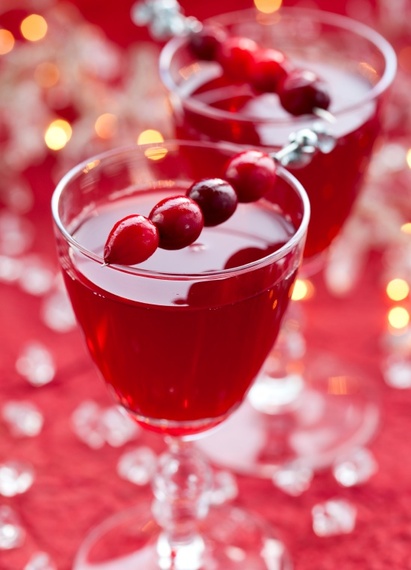 The most wonderful time of year is also the booziest. For many women who are struggling to lose or maintain their weight during the holidays, the problem isn't what they're eating, it's what they're drinking!
The most wonderful time of year is also the booziest. For many women who are struggling to lose or maintain their weight during the holidays, the problem isn't what they're eating, it's what they're drinking!
According to national statistics, nearly 60 percent of U.S. women drink, and when they do, most have more than the drink-per-day recommended limit. Several wine and spirits brands are targeting women with their new flirty, sexy wines or "lady" liquors, with the suggestion that their products are waistline-friendly.
Without sounding like the Grinch who stole Christmas, here are some sobering facts about how alcohol (even if it is marketing as better for you) can derail your diet.
1. They're not low in calories
Unlike food labels that meet Food and Drug Administration nutrition claims regulations, alcoholic beverages don't fall under the FDA's jurisdiction. Alcohol is monitored by the Alcohol and Tobacco Tax and Trade Bureau. Only recently has the bureau developed voluntary guidelines for "Serving Facts" that can be included on alcohol labels. They will include calories per serving and grams of carbohydrates, fat and protein. At this time, the bureau doesn't define what "low-calorie" means, so buyer-beware. The only way to know is look at the label for calorie information or go to the website if it's not on the label.
Ethanol provides 7 calories per gram and a "standard" drink has 14 grams of ethanol or 98 calories. (A standard serving for alcohol is 1.5 oz. distilled spirits, 5 oz. of wine or 12 oz. beer.) Some of the lower-calorie wines have 100 calories per 5 oz. serving compared to 120 calories in a regular glass of wine. Skinnygirl spirts, for example, have 77 calories per 1.5 oz., compared to 100 calories in serving of regular vodka, rum, gin or whiskey. It's a 23 percent savings, which isn't bad, but won't help you lose unless you account for those "empty" calories elsewhere in your diet.
2.Your drink is more than you think
There are a lot of factors we're not always aware of that fool us into drinking more. A recent study found that wine drinkers sipped 12 percent more wine when they drink from large, wide glass rather than narrow ones or when they hold their wine glass for a refill rather than having the glass on the table. White wine drinkers are also prone to drink more because of the lack of contrasting color that acts as visual cue to remind you how much you're drinking. Another study found that people pour 20-30 percent more alcohol into short, tumbler-style glasses compared to tall, highball-style glasses.
3.Alcohol stimulates your appetite and weakens your inhibitions
Studies show that appetite is stimulated shortly after drinking alcohol while it acts on reward pathways that reduce inhibitions and make food more irresistible. Diet records reveal that on a day when individuals imbibe, total calories, added sugars and saturated fat are all significantly higher compared to non-drinking days. Another study evaluated the evidence and concluded that alcohol's impact on driving us to eat is worse TV watching or lack of sleep.